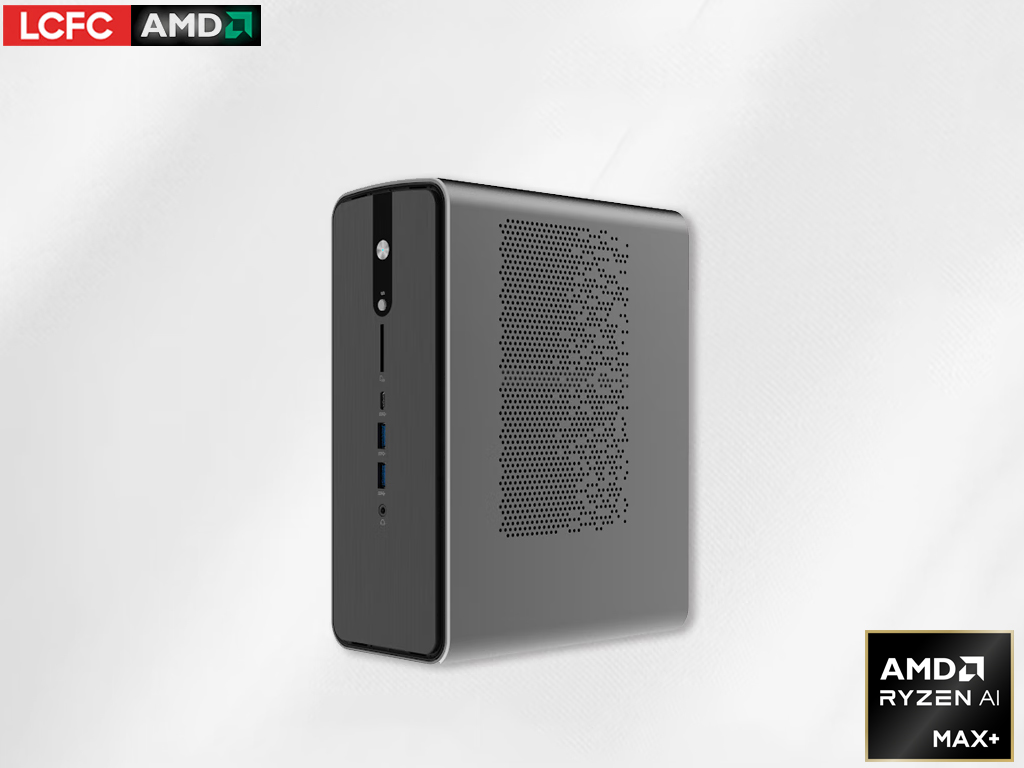The tech world is abuzz with the quiet unveiling of a significant new player in the compact computing arena: the LCFC H02 mini PC. This innovative system, developed by Lenovo’s capable subsidiary, LCFC, has made its debut in China, marking a notable advancement in small-form-factor computing. Positioned to deliver substantial performance, the H02 promises to cater to users demanding power in a remarkably small footprint, leveraging cutting-edge hardware to redefine expectations for a mini PC.
At the heart of the LCFC H02 lies AMD’s latest generation processors, featuring the highly anticipated AMD Strix Halo series. Prospective buyers will have the choice of three distinct configurations, headlined by the formidable Ryzen AI Max+ 395. This top-tier processor is complemented by mid-range and base models, sporting the Ryzen AI Max+ 390 and Ryzen AI Max+ 385 respectively, ensuring a spectrum of performance options to suit diverse user needs and budgets.
These powerful Ryzen AI Max+ chips are designed not just for raw processing power but also for advanced artificial intelligence capabilities. With integrated NPUs (Neural Processing Units), the H02 is poised to excel in AI-driven tasks, from complex computations to intelligent content creation and enhanced user experiences. This focus on AI makes the Lenovo H02 a forward-looking device, ready for the next wave of software and applications.
Beyond its robust processing units, the LCFC H02 offers impressive memory expandability. All configurations of this compact system are engineered to support a substantial 128 GB of LPDDR5 RAM. While specific pre-installed memory amounts are not detailed in the initial listings, the sheer capacity for high-speed RAM ensures the H02 can handle demanding multitasking and resource-intensive applications with ease, providing a seamless user experience.
Storage flexibility is another key highlight of this new mini PC. The H02 is equipped with two M.2 slots, providing ample room for high-performance PCIe 4.0 SSDs. This dual-slot configuration allows users to maximize storage capacity and achieve lightning-fast data transfer speeds, crucial for professionals and enthusiasts alike who require rapid access to large files and applications.
Regarding affordability, the LCFC H02 is introduced with a tiered pricing structure that reflects its varying configurations. The base model, featuring the Ryzen AI Max+ 385, starts at CNY 17,999, approximately $2,508 USD. The mid-range variant, powered by the Ryzen AI Max+ 390, is priced at CNY 18,999 (around $2,647). For those seeking peak performance, the top-end configuration with the Ryzen AI Max+ 395 is available for CNY 19,999, converting to roughly $2,786 USD.
Currently, the LCFC H02’s availability is limited to the Chinese market. There has been no official announcement concerning a global launch, and it is worth noting that LCFC, as a Lenovo subsidiary, typically maintains a less pronounced international presence compared to its parent company. This regional focus suggests that, for now, the H02 will primarily serve the domestic Chinese market, though international interest in this powerful AMD Strix Halo system may grow.
This compact powerhouse is ideal for a diverse array of users, including creative professionals needing robust processing for design and editing, tech enthusiasts seeking a high-performance yet space-saving desktop solution, or even small businesses looking for powerful, discreet workstations. Its advanced specifications make it suitable for tasks that traditionally required larger desktop towers, pushing the boundaries of what a mini PC can achieve.
The quiet launch of the LCFC H02 represents an intriguing development in the competitive landscape of compact computing. With its advanced AMD processors, substantial memory support, and flexible storage options, this Lenovo-backed mini PC sets a new benchmark for performance in its class. As the demand for efficient and powerful small-form-factor machines continues to rise, the H02 stands out as a compelling option, demonstrating the innovation emerging from the Asian tech market.






Leave a Reply